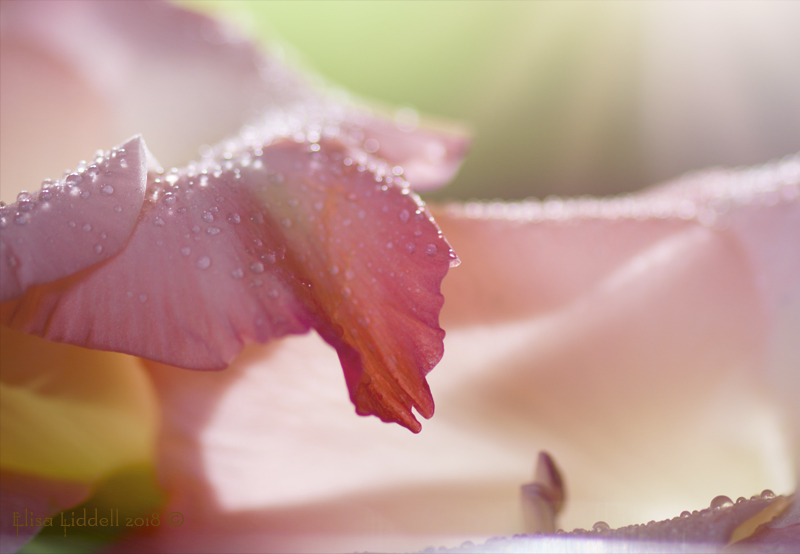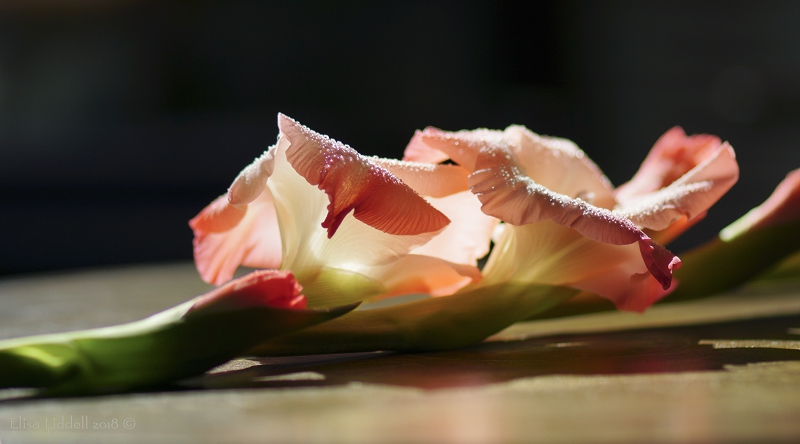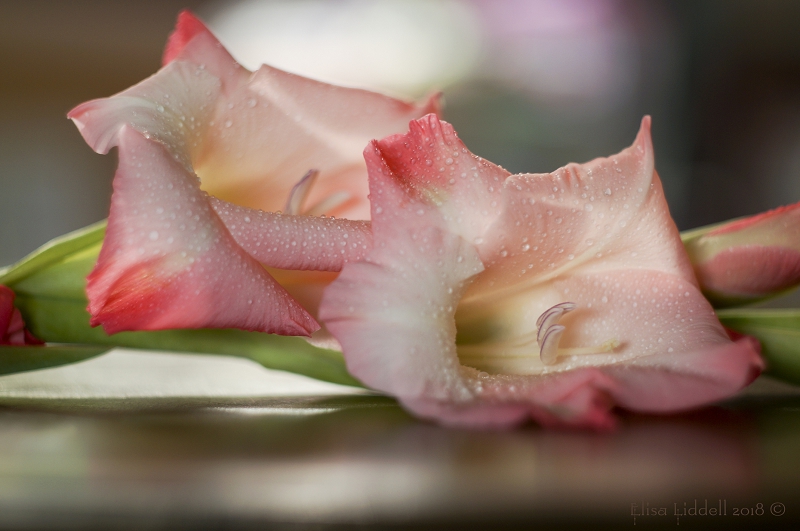
When I was writing this I thought of it as “Chasing the late light at F2.8” or “3 cameras and 1 flower”. But both of these titles were a bit unwieldy as URLs, so I simplified it. But there are three lenses in this playful tale, and all are indeed set at F2.8. So, to begin…
The way my house is laid out, the front gets the sunlight in the morning, often until the early afternoon. A big south-facing bay window makes it the best place to shoot. Then it gets tricky … by late afternoon the sun has moved round to the side of the house; then there is a small window of time, and a small physical side window where I can sometimes catch the light. There are trees in the way – so, especially if it’s windy, there is a constant flickering of light and shadow. Then the sun moves round to the back of the house, and sometimes there is the late light shining through a willow hedge right into the kitchen and onto a dark blue Formica top of the breakfast bar. This the story of chasing the late afternoon light with a lovely salmon pink gladiolus stem, trying to get some photos using just the natural light! And as two of the cameras were already set on F2.8 I shot the third on F2.8 too.
Note: I always shoot on full Manual, especially indoors – I’m so used to it I never even think about it. And the White Balance remained constant on ‘cloudy’ or ‘daylight’ on all 3 cameras for this shoot.
The cameras to hand were:
1) Lensbaby Composer Pro with 50mm double glass optic with a +4 macro filter (essentially a fixed focal length)
2) A NEX-6 with my favourite Helios Russian lens (frozen at F2.8 so it is a fixed focus)
3) The Sony A77ii with the tele-macro 100mm lens (a heavy combination, but so versatile in the results it can achieve)
I moved a small round wooden table beside the side window with the swaying trees casting strong light then deep shadow. I laid the gladiolus on the wood and waited to catch the sunshine.
The tele-macro allowed me to zoom out and take in both the flowers lying on the table.

I could catch the sunlight and strong shadow it cast; the graceful curved shape of the stem; and a sense of the wooden surface, with a slight reflection too. And using F2.8 meant that the background was nice and dark due to the shallow DoF.
Next I took the Helios lens. It makes a lovely and soft image, but F2.8 is the only option – which gives me a closer composition but with no flexibility to move in closer, or further away.

The light is softer, and there is a background bokeh and definite reflections on the table.
So – could the Lensbaby offer me anything different at F2.8 (the aperture ring was in place from a previous shoot)

The light was much harder to control, and focusing took more time as the tree branches gave a strobe effect the table! But I did manage to get the Lensbaby swirl of bokeh around the petals, and the internal glow! Here I used a high shutter speed. I try to keep the ISO as low as possible – I find that my Sony cameras are best with low ISO, and get noticeable ‘noise’ at higher settings.
By now the sun was moving round the house and lower in the sky .. so to complete the process I waited until I could catch the light as it fell across the breakfast bar. I went back to the big tele-macro lens, as it can get closer in to catch the water droplets better than the the other two.

Against the dark surface, and with light slanting through the open door I took the final shots. This time the white of the freezer in the background stopped me achieving a matt black background. But there are nice reflections on the work surface, and it looks like liquid – a lens effect I hadn’t expected. And I can get in closer with the tele-macro than I could with either of the other two lenses.
I do spend a lot of time chasing the light – I guess many of us do! It is nice to be able to control the light in a studio setting – and I do that too. But natural light and the camera lens can make unexpected magic, with lens flares, bokeh, and a richness and variety of light quality that man-made lighting just can’t touch. I no longer have the energy or stamina to chase the light across the landscape and into the night …. but around the house can be quite a challenge too ;o)
On Flickr you can find my Album of Gladioli photos
Flickr holds Elisa’s online Photo Gallery
© 2019 Elisa Liddell
